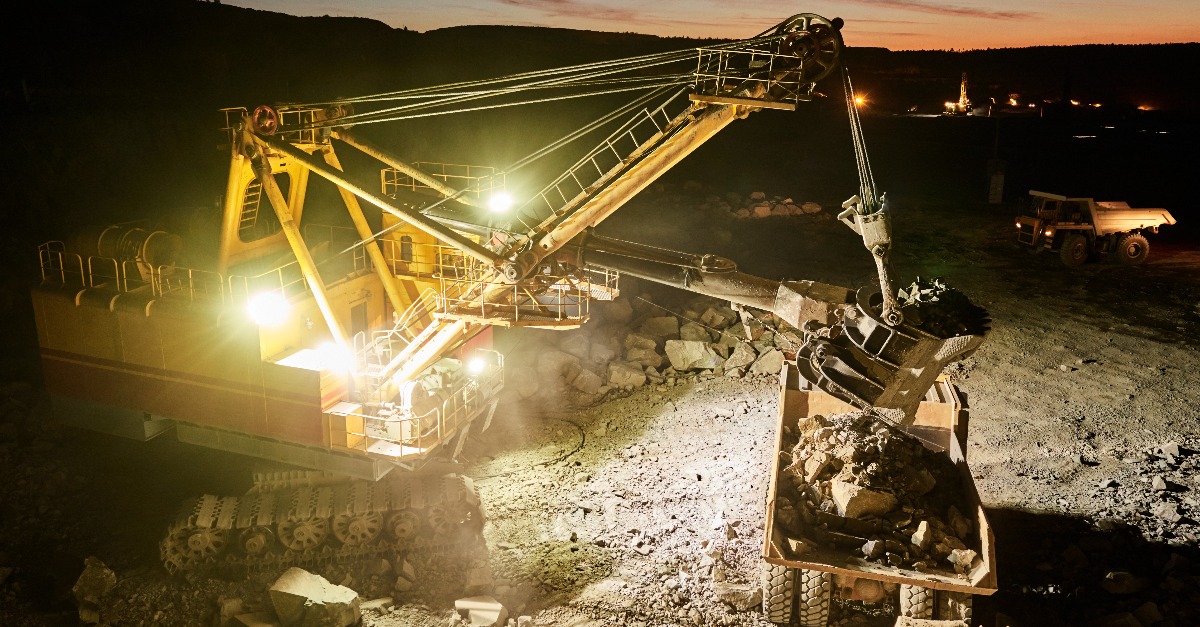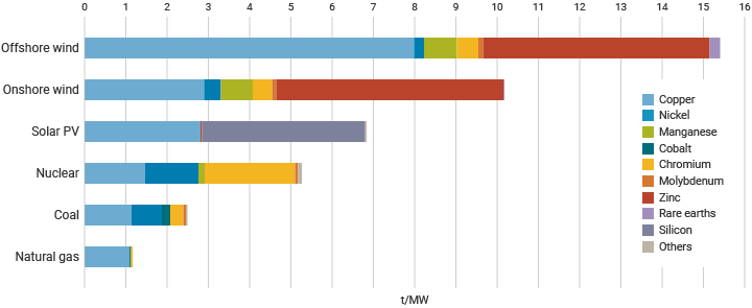Energy & Critical Metals
Price Outlook: Uranium and the Nuclear Renaissance
Throughout the previous decade or so, uranium has been firmly gripped by the bear market. From a spot peak of $136 per pound in June of 2007, the price…


Throughout the previous decade or so, uranium has been firmly gripped by the bear market.
From a spot peak of $136 per pound in June of 2007, the price fell to the $20 – $30 range for much of the post-Fukushima period.
Most producers supplied the metal at a loss, as investors and the public turned their focus towards solar, wind and other forms of electricity.
However, times may have turned auspicious for the dense silvery-white metal.
This year, the metal’s price dipped initially but has since shown signs of recovery, breaking through the $50 level.

Amir Adnani, CEO of Uranium Energy Corp, a US-based pure-play uranium company, believes that nuclear energy,
…is the safest form of electricity generation. It has zero carbon emissions. It is baseload power so that’s 24*7*365 and it has over a 95-capacity factor.
Capacity factor refers to the percentage of a typical day that a facility can generate power.
He adds that electricity generated from nuclear plants is safe, reliable and pocket-friendly.
Despite these benefits, the sector has been in decline, both in the US and globally.
In the US, the total number of plants has declined from 107 in around 1990 to 93 today.
Recent history
At the end of the cold war, the Strategic Arms Reduction Treaty (START I) program signed between the US and Russia in 1991, required the reduction of nuclear arsenals and the destruction of excess delivery vehicles.
Future agreements including START II put further caps on the number of active warheads.
Adnani acknowledges the crucial role played by the agreed-upon denuclearization regime in terms of international security. However, he adds,
… (The Soviet-era highly enriched missiles were) blended down to low enriched uranium and sold into the market. This became the equivalence of the world’s largest uranium mine and destroyed the domestic industry in the U.S.
Uranium priced at artificially low rates flooded the US market post-1991, decimating the viability of operations.
In addition, the industry has been dogged by safety concerns, particularly post Three Mile Island, Chernobyl and more recently, Fukushima.
However, more recently, there has been a sea change in perceptions, in favour of the use of nuclear energy for electricity generation in civilian applications.
In 2021, Ann S. Bisconti, PhD, a globally recognized expert on nuclear power issues and communication, reported that a survey had shown a sharp uptick in the percentage of Americans in favour of nuclear energy as a source of electricity in the United States.

However, not all surveys were quite so optimistic.
For instance, the 2022 Pew Research Center found that only 35% of Americans felt that the federal government should encourage nuclear power, although this was higher than oil and gas.

Key drivers of changing sentiments
Ukraine-Russia and energy security
In 2022, a most tragic turn of events has propelled nuclear energy to the forefront.
With hostilities breaking out between Russia and Ukraine (supported by NATO), policymakers across the globe realised just how energy insecure their respective countries had become.
Overreliance on global supply chains for energy imports exposed countries to sanctions, tit-for-tat retaliatory measures and black swan events such as the Nordstream explosions.
Both European and other non-western countries were rocked by skyrocketing natural gas and oil prices.
Several experts have said that the conflict forced policymakers to ‘relearn’ the importance of energy security.
This trend is bullish for nuclear power as it allows countries to secure their resources within their borders in an increasingly polarized world.
Decarbonization
As per the International Energy Agency (IEA), nuclear power has reduced CO2 emissions by 60 gigatonnes over the past half-century.
Moreover, a research report by the London School of Economics notes that 30% of the world’s carbon-free energy comes from nuclear sources, cementing its role in the energy mix moving ahead.
Although there has been much support for solar, wind and other renewable energy technologies, their limitations have begun coming to light.
Firstly, these are intermittent sources of electricity generation and depend on several variables that are often in flux.
As discussed in an earlier piece on copper, according to Dwight Anderson, the founder of Ospraie Management, LLC estimates,
…it is over 3 MW of (renewable energy) power and related storage…that you need to build to replace one MW of base load.
Secondly, compared to nuclear power, these technologies require a very high volume of mineral extraction for their production and operation, adding both environmental and inflationary pressures.

At a time when countries are setting ambitious net-zero goals and carbon emissions targets, nuclear energy can provide an invaluable bridge to the next phase of green electrification and beyond.
The sector received a major boost when Brookfield Renewable, one of the largest clean energy investors with a market cap of $8bn, made considerable investments in the nuclear space in October 2022, paving the way for other renewables and ESG-focused capital to fund such developments.
Bannerman Energy’s CEO Brandon Munro remarked,
Now, what that does is that unleashes a wall of capital that’s very badly needed in our sector.
In addition, the US government re-joined the Paris agreement, while both the UK and EU moved to classify nuclear power as a sustainable energy source, driving long-term investor interest.

In terms of costs, the nuclear sector offers avenues for affordable power supplies due to the long life of the fuel cycle, with plants operating for 60-80 years.
The IEA’s 2020 estimates found that nuclear power facilities had by far the lowest and most compact cost structure of all energy sources.
Growing support for SMRs
One of the key trends driving greater interest in nuclear-powered electricity is the acceleration in the development and adoption of small modular reactors (SMRs).
Small reactors tend to be under 300 Mwe and usually offer a more attractive risk-reward profile compared to large-scale facilities, particularly when capital costs are elevated.
Moreover, smaller designs can be easily transported and set up to supply relatively small-scale grids in remote locations without having to be positioned in the vicinity of cities.
Exhausted coal mines can even be retrofitted as SMRs, and are favoured since they offer established electric infrastructure, and transportation links, and can help retain jobs.
Safety
Earlier this month, economist and investor Michael Edesess wrote,
But in the case of Fukushima, at most one person died from the radiation. In the case of Chernobyl, confirmed deaths from radiation were less than 50. Three Mile Island posed no danger at all to human health.
Even wind power has caused more deaths per kilowatt-hour of electricity produced than nuclear power. The quantity of nuclear waste produced by nuclear power is minuscule compared to that of the carbon dioxide emitted worldwide.
The quantity of nuclear waste produced by nuclear power is minuscule compared to that of the carbon dioxide emitted worldwide.
The use of molten salt reactors is another development which has improved the safety image of the industry.
National developments
Several countries have taken steps to localise their uranium-nuclear supply chain, adding to bullish expectations.
USA
Today, the United States imports nearly 100% of its uranium requirements, relying primarily on Uzbekistan, Kazakhstan, and Russia.
Owing to the urgency surrounding the Ukraine war, the US awarded its initial contracts under the Strategic Uranium Reserve in December 2022, to develop a stock along the lines of the SPR, while incentivizing domestic production.
To secure these supplies, the Federal government paid rates that were approximately 40% above spot, with a target of accumulation of 1 million pounds of domestically produced uranium, or about 2% of feedstock demanded per year.
Further, in January 2023, the US Nuclear Regulatory Commission (NRC) issued final design certification rules for builder operators while seeking approval for SMRs.
Japan
Japan has for the first time since the Fukushima disaster in 2011 found that more than half, i.e., 53% of respondents in a Nikkei poll supported nuclear reactors as long as necessary safety measures are taken. This is a sharp improvement since September 2022 which stood at 44%.
The surge in popular opinion may have been due to electricity prices which rose 20.2% in the latest report, accelerating a change in societal attitudes.
The Japanese government in turn is in the process of building new reactors and prolonging the life of ageing facilities.
Canada
For its part, Canada, which already receives nearly three-fifths of its energy from nuclear power, released a Critical Minerals Strategy in December 2022, which also covered uranium.
As part of this strategy, the federal government has earmarked $2.8 bn to develop the entire value chain of all 31 notified minerals, and shall also offer a 30% tax credit to incentivize exploration activities.
International
In both China and India, construction is very active.

Final words
A combination of energy insecurity, decarbonization goals, improved safety and prolonged inflation have begun to tilt public opinion in the favour of nuclear power generation once again.
Several companies and governments have begun to enter contracts for the long haul.
For instance, John Ciampaglia, CEO of Sprott Asset Management noted that Ukraine had booked 67 million pounds worth of uranium deliveries over the next 12 years, signalling that demand will continue to remain robust.
Having outperformed most assets in 2022, economists at TradingEconomics.com forecast that uranium spot price may rise by approximately 8% by the end of 2023, settling between $54 – $55.
For now, the price action is relatively muted and may offer a good entry opportunity for long term-investing.
With the structural supply deficit in the uranium market expected to persist, interested investors may be able to benefit from a run-up in the market as several large-scale utilities have drawn down inventories and are now approaching the renewal of their three and five-year feedstock deliver contracts; amid aggressive purchases by Sprott Physical Uranium Trust whose stocks now equate to approximately 120% of US domestic demand for the year.
Ciampaglia expects that in the next couple of years, prices will have to shift permanently to $75 – $100 levels, without which several mining operations would remain unviable and force shortages.
The post Price outlook: Uranium and the nuclear renaissance appeared first on Invezz.

Uranium Exploration Company Announces Additional Staking in the Athabasca Basin
Source: Streetwise Reports 12/22/2023
Skyharbour Resources Ltd. announced an update from its Canada-based Falcon Project along with additional…
Tesla Launches New Mega Factory Project In Shanghai, Designed To Manufacture 10,000 Megapacks Per Year
Tesla Launches New Mega Factory Project In Shanghai, Designed To Manufacture 10,000 Megapacks Per Year
Tesla has launched a new mega factory…
Giving thanks and taking stock after “a remarkable year”
An end-of-year thank you to our readers, industry colleagues and advertisers before Electric Autonomy breaks from publishing until Jan. 2
The post Giving…










